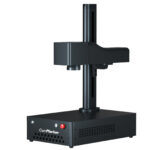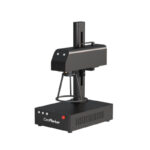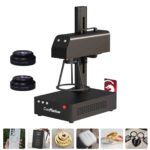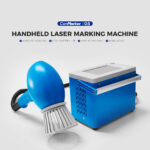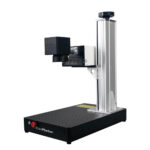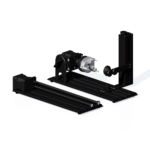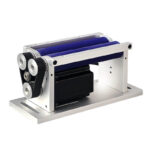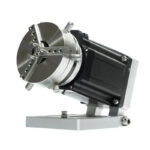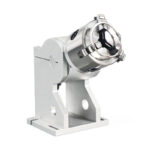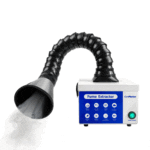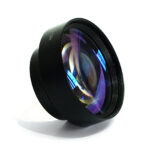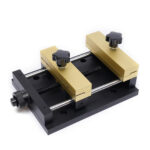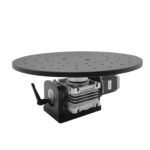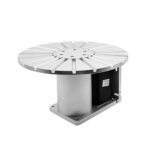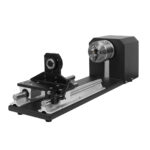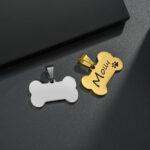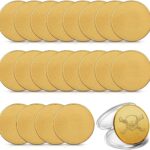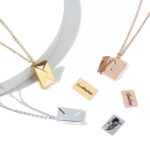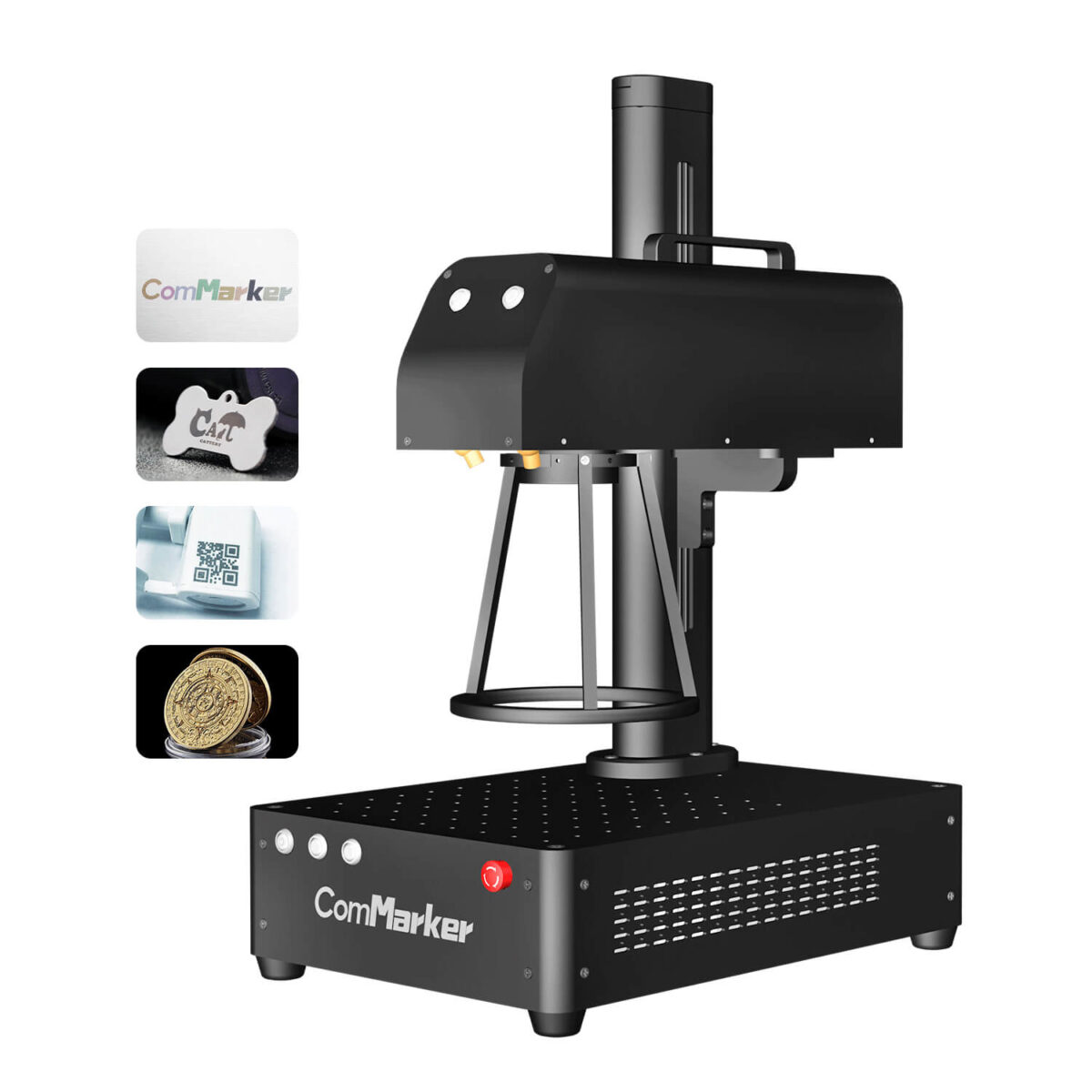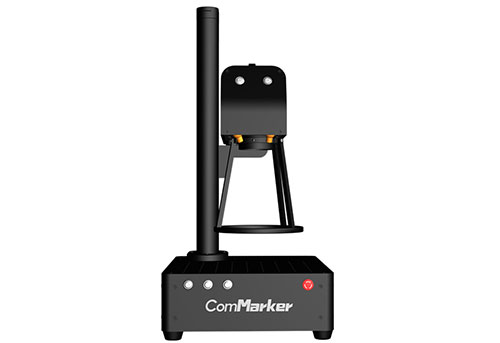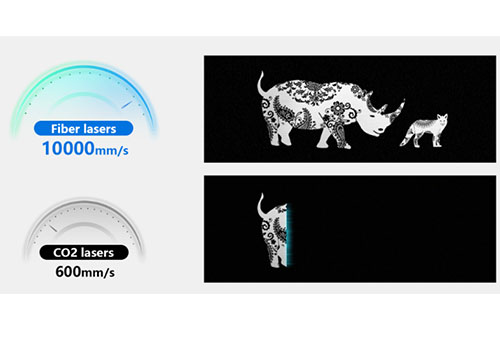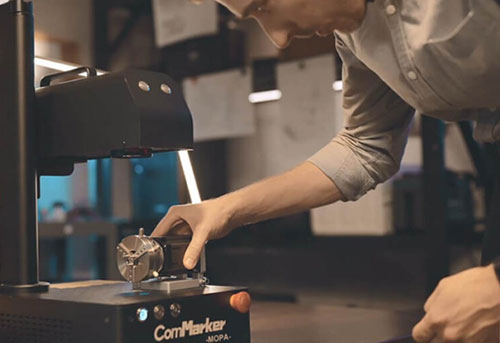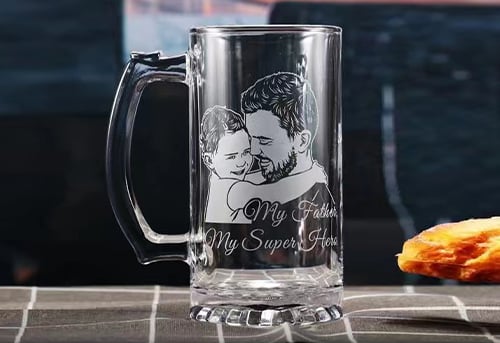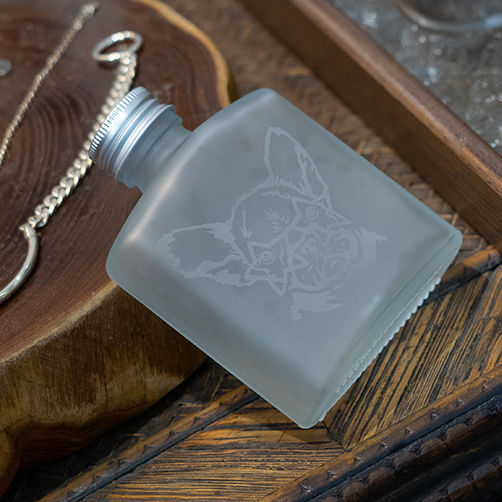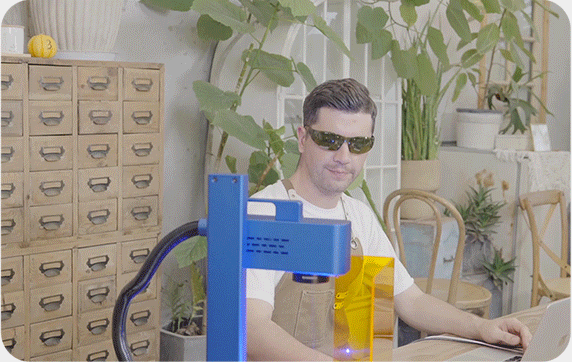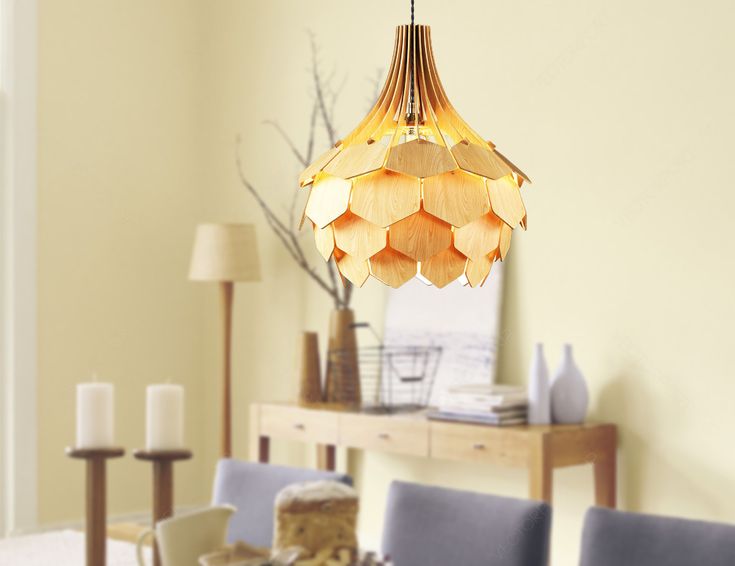Ved å utforske den revolusjonerende verden av lasergravering, vi møter ofte to teknologiske vidundere, MOPA and fiber lasers, which are today’s widely used advanced units for carving, etching, and marking commercial and industrial material processing.
These cutting-edge models are just perfect for intricate designs and accurate engravings on various materials. Though many associate them with serving the same purpose, their marking capability and working efficiency are technically different. Viewing them closer, you may find them a bit different in structural makeup, versatility, and applicability.
Nå, if you want a simple answer to “What makes them apart?” the short answer is: It depends on the intricacies of the engraving project at hand, where fiber lasers excel in bulk metal applications, and MOPA lasers carve objects demanding tailored pulse configurations and color marking across diverse materials.
derimot, both technologies work wonders in their field; this blog will further clarify what exactly you should consider when you’ve specific engraving needs. Så, Keep reading!

Innholdsfortegnelse
Introduksjon
– Brief Overview Of Laser Technology And Its Evolution.
More generally, Laser engraving is a transformative and widely adopted technology today, finding its way to the forefront of every manufacturing setup. A system well-defined for its precision and versatility has evolved dramatically since its inception. As soon as it shows its practical effectiveness, it undergoes continuous innovations and leads to diverse applications and scientific advancements.
I dag, when businesses or industrialists look for solutions for product traceability, serial codes, logoer, personalized texts, and other manufacturing-related applications, laser machines are the only go-to solution with diverse functionalities and repeated solutions.
From aerospace implementations to usage for more personal projects, laser engraving, and marking technology has revolutionized everything we see in day-to-day life.
Going behind, these remarkable machines hit the market in the 1960s, and soon after that, they were adopted as practical tools for industrial manufacturing in the 1970s. derimot, the first ever laser project documented in history was the production of printed circuit boards.
It further evolved into a versatile tool for material processing and customizable marking of a number of objects with unbeaten precision, allowing for more complex – yet also impeccable – engraving results.
Importance Of Understanding Different Laser Types For Various Engraving Needs.
Getting to know each lasergraveringsmaskin’s inside-out–the specs and material processing ability is a must-have knowledge impacting productivity, effektivitet, and quality of the engraving tasks at hand. The broader product portfolio of systems such as Fiber, MOPA, CO2, Diode, and UV–all cater to diverse material and application requirements.
Åpenbart, a machine built explicitly for metal engraving would not yield optimal results when applied to wood and plastics. på samme måte, the disparity between each laser model is characterized by speed power, wavelengths, and pulse duration, yet no single machine is an absolute one for all. Faktisk, the material put under the laser head reacts differently as per its surface characteristics, dybde, and thermal conductivity; hence, the right selection of machine becomes crucial.
On top of it, if processing bulk orders or carrying industrial-level engravings is the demand, fiber laser systems, in this case, would work incredibly well with unmatched efficiency.
Just like that, when color marking is the concerns, as offered by B4 MOPA JPT, the features enhance the versatility of the system and round out the decision-making process.
Section 1: Understanding MOPA Lasers
– Definition And Basic Principles Of MOPA (Master Oscillator effektforsterker) Lasers.
MOPA laser, which is elaborately called Master Oscillator Power Amplifier, is precisely a system comprised of two structures, dvs. a master optical laser that generates the initial beam and a power amplifier to boost the output power of the engraving source. The “fiber” element of this system is the delivery system for the laser and one that results in nearly zero energy loss.
Know that MOPA technology is the latest invention in the laser category, which allows this incredible device to achieve higher peak powers, unlike conventional laser units. The configurations provide greater flexibility over their frequencies, pulse durations, and energy, which are likely to give users the ability to perform a variety of applications, including detailed marking, customized engraving, and varied-level material processing.
Since MOPA is known to produce less heat, it greatly minimizes the chance of damage to the metal and the risk of corrosion and allows surface oxidation to mark colors on metal.
Remarkably, With the ComMarker B4 JPT MOPA Fiber laser, pulse duration varies and can be set in a range from 2 til 500 ns, with a frequency ranging from 0 kHz til 4000 kHz.
Just by Keeping the pulse duration short, you can achieve high contrast marking on plastics and deal with sensitive materials. In contrast, longer pulses can be used to engrave certain types of metals or for applications like deep engraving.By adjusting the pulse width and frequency, color engraving on metal can also be easily achieved.
De B4 JPT MOPA fiberlaser is a popular choice among customers because it expands the range of applications and adds more value to your fiber laser marking system. Providing all the benefits of a standard fiber laser markeringsmaskin with the added advantage of flexible output power configurations (20W, 30W, 60W, and 100W), you can produce detailed markings on medical-grade materials, electronic components, jewelry metals, gemstones, and automotive parts.
ComMarker B4 JPT MOPA Fiber Laser Markeringsmaskin
ComMarker B4 -MOPA JPT MOPA-fiber muliggjør levende fargemerking på rustfritt stål og høykontrastgravering på anodisert aluminium. Ikke
Section 2: Understanding Fiber Lasers
– Definition And Workings Of Fiber Lasers.
Simply put, a fiber laser is a type of laser where the active laser medium is an optical fiber fundamentally different from traditional lasers, which often rely on crystals or gas as the gain medium.
In the evolutionary world of marking and etching, fiber lasergraver, like the ComMarker B4, stand out as a prominent tool for precise and efficient engraving on different materials such as metal, plast, and leather. The compact size, exceptional beam quality, remarkable 15000mm/s marking speed, and 0.01mm accuracy, coupled with an ability to mark extremely small spots, give it a huge spotlight.
It’s basically a non-contact processing that significantly reduces the chance of material damage; dermed, it’s the most favorable one for intricate designs and delicate projects. These machines seamlessly integrate with Computer-aided software such as Lightburn so any digital image can be brought onto the material.
What’s most interesting is that B4 fiber lasergraver boast longevity and durability, providing stable performance with a 100,000-hour service life. The highly efficient technology also utilizes a solid-state design that reduces maintenance needs.
Thus, de B4 Fiber laser engravers become integral tools for product branding, serialization, traceability, and artistic engraving, increasing efficiency and precision in various industrial and commercial processes.
ComMarker B4 – 20W/30W/50W/60W/100W fiberlasergraver&lasermerking graveringsmaskin
B4 fiberlasergraver 0.01mm Presisjon 15000mm/s Graveringshastighet 20W Laserkraft ComMarker B4 fiberlasergraver 0.01mm Presisjon 15000mm/s
– Distinct Characteristics And Benefits Of Fiber Lasers.
The high productivity output and intricate design capability of fiber laser engraving technology are the reasons why they’re the most talked-about machine everywhere. The possibilities are seemingly endless for customized laser engravings, with almost no restrictions on complex designs and extensive inorganic material compatibility.
The models use optical fibers to create a laser beam with a transport fiber that transmits the laser to the system’s cutting head. The condensed, narrow beam cuts through metals of various thicknesses and works incredibly faster to etch the desired results.
You can use this system to engrave medals and awards or even to create customized décor or products. Some hobbyists and enthusiasts put it to work on personalized products for customers, offering unique and custom designs.
Thanks to its reputable user-friendliness. Individuals with personal machines can efficiently complete at-home projects and create personalized gifts for friends or family.
Section 3: Technical Comparison
In essence, both fiber and MOPA lasers share the same fundamental principles and outlook; inside, they work differently. MOPA lasers excel in situations demanding a tailored approach to pulse parameters, while fiber lasers shine on engraving metal surfaces. The choice of laser depends on the materials, budget, engraving needs, and desired outcomes.
Technically speaking, fiber and MOPA lasergraver show their disparity on grounds such as frequency, pulse duration. The pulses of standard fiber lasers are shorter, making them well-suited for precision engraving and markings. While the pulse duration varies with MOPA lasers, it goes well with applications requiring a broader spectrum of mark contrast.
In the case of the ComMarker B4 model, a fiber laser generates the beam within the engraving area of 110mm x 110mm for more power and 200mm x 200mm for large-scale engravings. På den andre siden, de Master Oscillator effektforsterker, MOPA JPT generates the laser beam by choosing multiple field mirror options from 70mm x 70mm to 200mm x 200mm, and this allows the machine to have a pulse frequency with more amplitude than the fiber, fra 0 til 4000 kHz.
While these laser technologies can process many of the same materials, bare MOPA lasere can color-mark stainless steel and provide black and white engravings of anodized aluminum.
Section 4: Application-Specific Differences
Now that you’re aware of the technical aspects of both the system, MOPA, og fiber lasergraver, find some disparity in the application fields.
Undoubtedly, The efficient use of fiber lasers for metal markings is unmatched, expanding its demands for bulk processing in various industries such as electronics, oil and gas, romfart, and a variety of plastic materials.
But when it comes to working on these needs, including color engraving, contrast marking, MOPA engravers are better choices than fiber laser engravers. This is because these models integrate fiber laser for initial laser beam generation and an added power amplifier to strengthen the power output, ultimately producing impeccable engraving results with every use.
Simply put, if you want to engrave thousands of metal pieces a day with colorful logos, you should definitely get your hands on the B4 MOPA JPT fiberlaser laser model from ComMarker.
Section 5: Maintenance and Cost Considerations
Reviewing the maintenance and cost elements of both systems–fiber and MOPA–is crucial as they dictate the economic viability and efficiency of the machines.
When it comes to fiber laser systems, fortunately, they’re the ones known to be the most cost-effective in terms of operational efficiency. The integrated electro-optical efficiency is as high as 20% or more, which significantly saves power consumption during work.
With having a high wall-plug competency, referring to the conversion process of a larger portion of their input power into laser output, you face very little operational expense. Although the initial investment expense is slightly higher, most commercial-grade lasergraver, such as B4 fiber laser models, range from $2k for a small footprint and output power (20kW – 100kW) machine to more than $100k, but the massive benefits over the machine’s life justify the initial capital expenditure.
I tillegg, the construction of fiber laser engravers is compact, sturdy, and durable, meaning you can expect them to run for an estimated lifespan of over 100,000 timer. Further, the absence of moving parts in this laser source cancels out the potential for mechanical failures, which you can associate with less downtime and nearly zero maintenance costs. This strengthens the reliability and longevity aspect of the machine, which clearly translates to a lower total ownership cost over time.
På den andre siden, MOPA technology offers flexibility in pulse parameters, so apparently, it’s likely to stand ahead in terms of costs. Someone opting for it for the first time may find the initial investment costs a bit higher, up to $3k, but he would find the added features and versatility outweigh the cost, especially for applications requiring customized pulse duration and frequency rate.
derimot, many experts say that their dual structural makeup–the master oscillator and power amplifier- may slightly require more regular check-ups than their counterparts, but all it ensures that the machine can keep its integrity for long-term optimal performance.
Section 6: Pros and Cons of Each Type
– Advantages And Limitations Of MOPA Lasers
When MOPA technology is brought under scrutiny, it’s apparently the most indispensable and versatile engraving tool that facilitates businesses across various industries, from retail, manufacturing, engineering, and creative.
This marking system offers you maximum control over the high-contrast laser’s interaction with materials with varying surface characteristics, just like plastics, so you may end up having optimal results and improved visibility and readability in various applications.
The most definitive feature of MOPA lasers is that they can produce assorted colors on certain metals, such as stainless steel, and high contrast markings on anodized aluminum by altering pulse durations and frequencies, a feature usually unavailable in many other laser types.
Because pulse durations are customizable, MOPA lasers reduce the heat-affected zone on the material being processed. This reduces thermal damage and discoloration, preserving material integrity and achieving absolute details, mainly when working with sensitive materials.
Regarding MOPA fiber lasers, They don’t have any moving parts or consumables, meaning they’re fully sealed against dust and dirt, leading to lower maintenance requirements than other lasers.
The initial drawback of this technology could be its price, but the engraving quality it marks and the application flexibility largely compensate for the cost.
– Advantages And Challenges Associated With Fiber Lasers
When we talk about laser technology, fiber lasergraver have clearly revolutionized the industry, opening avenues for increased production efficiencies. These laser models deliver exceptional beam quality, characterized by 0.01mm accurate focus and precision, so ideally, it goes well for tasks requiring intricate designing and speed markings.
You should know that Fiber lasers utilize a wavelength of 1.06 μm, so you can see that it gets absorbed into many materials, with only a minor percentage of the laser’s rays reflected.
Since the work involves non-contact processing, there’s hardly any chance of material damage or surface burning, allowing the engraving of irregular shapes, including cylindrical ones, to be easy. This surely makes fiber lasers the most reliable and almost maintenance-free. Thus, fiber lasers boast excellent stability in high-temperature and vibrational working conditions.
Though the fiber’s tiny core produces the beam, the machine can possibly create a high-quality, straight optical beam with less diffraction than with other methods.
Alt i alt, when it comes to operational efficiency, it’s pretty outstanding, with unparalleled high wall-plug efficiency translating to environmentally friendly options, positioning them as a huge saver of operating costs.
Konklusjon
When it comes down to defining the two major-hit laser technologies, Fiber and MOPA, we can’t conclude without saying that these two, when introduced to the world, have made material processing and engraving objects very handy.
Undoubtedly, The high-performing units of ComMarker, both B4 fiber lasers og MOPA JPT, are built to outperform many traditional laser systems in accuracy, presisjon, and operational efficiency.
derimot, the former, that is the fiber laser models. competes incredibly well in processing bulk orders with a speed capability of 15,000mm/s, while the latter, MOPA excel in achieving color marks and contrast engravings on stainless steel and anodized aluminum.
What exactly you need to do is have the right tools and adequate knowledge to execute the task accurately and effectively. Whether you invest in fiber laser machines or MOPA systems for cutting, welding, or engraving, ComMarker is a reliable service provider that can assist you in finding the right solution for your specific needs.

